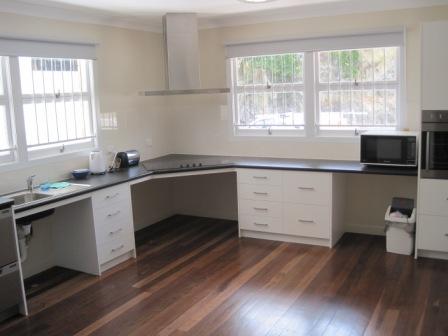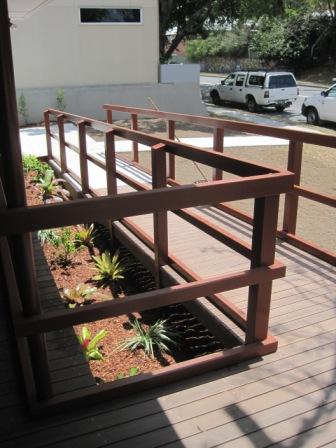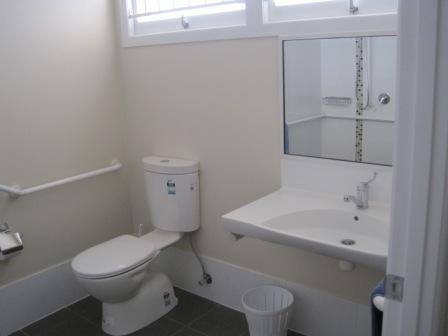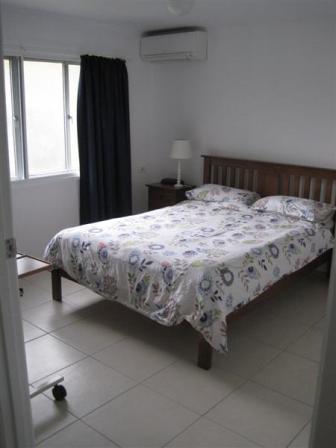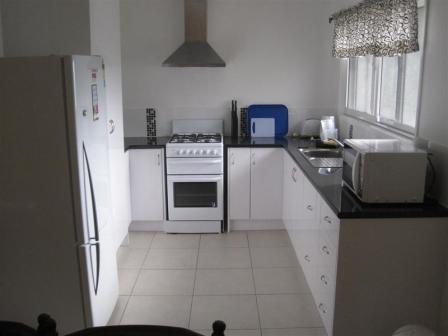Transitional Rehabilitation Program
Please note: QSCIS has developed a new website for health and disability professionals and can be found at: https://qscis.health.qld.gov.au
The resources available on the new website are designed for clinical purposes with the aim of building capacity for acute care, rehabilitation, and community management of spinal cord injury.
Currently there are resources available for bowel and skin management, as well as QSCIS contact and referral information. More resources will be published soon.
-
TRP is the final stage of your rehabilitation program in the Spinal Injuries Unit. Our program is designed to help you manage the move from hospital to home. We know that this can be a particularly challenging time for many people, even if you have already been on weekend passes.
TRP staff include physiotherapists, occupational therapists, social workers and nurses. All are experienced in working with people who have had spinal cord injuries.
Our program helps you to build on your independence and the new skills that you have learned during your rehabilitation program in the Spinal Injuries Unit. It helps you to adapt those new skills to your own home and community, or a “home-like” environment. TRP also helps you to deal with any emotional challenges that you might face when you return home.
TRP is a program designed to assist the person with the spinal cord injury, as well as their family and friends. TRP staff also work closely with other people who may be assisting you, such as your GP, carers, nurses or other therapists. -
TRP may be provided in your own home if you live within 150km of the Princess Alexandra Hospital. TRP staff are able to travel to your own home if you live in Brisbane, the Sunshine and Gold Coast and west to Ipswich and Toowoomba, and may travel further in certain situations. If you reside outside the TRP travel area, we are able to offer you accommodation in one of 3 accessible TRP houses. These houses are around 15 minutes drive from the hospital. The types services that TRP can offer will vary depending on the distance you live from the Princess Alexandra Hospital (PAH). The information below regarding the services we can offer may be used as a guide in considering the options available for continuing your rehabilitation after discharge from the Spinal Injuries Unit.
TRP Location TRP Service Type and Frequency May Include These Other Services Less than 100km from PAH Own home 1 - 2 visits per week for each TRP team member (Nurse, OT, PT, SW). - Public hospital outpatient, rehabilitation or therapy services
- Private outpatient or therapy services
- Transition care programs
- Community based rehabilitation programs
Between 100km and 150km from PAH Option 1:TRP house
1 - 2 visits per week for each TRP team member (Nurse, OT, PT, SW). - Public hospital outpatient, rehabilitation or therapy services
- Private outpatient or therapy services
Option 2:Own home
1 visit per fortnight for each TRP team member (Nurse, OT, PT, SW) with additional support provided through telehealth services. - Public hospital outpatient, rehabilitation or therapy services
- Private outpatient or therapy services
- Transition care programs
- Community based rehabilitation programs
More than 150km from PAH Option 1:TRP house
1 - 2 visits per week for each TRP team member (Nurse, OT, PT, SW) - Public hospital outpatient, rehabilitation or therapy services
- Private outpatient or therapy services
Option 2:Own home
1 session per week via TRP Telehealth Service (no home visiting) - Public hospital outpatient, rehabilitation or therapy services
- Private outpatient or therapy services
- Transition care programs
- Community based rehabilitation programs
-
TRP rehabilitation programs commonly run between 4 and 8 weeks. The actual length of your program may vary depending on your needs and the rehabilitation goals that you have. In the week before you leave the Spinal Injuries Unit, the TRP team will meet with you to discuss your rehabilitation goals and work with you to determine the length of your TRP program. Once this has happened, we will give you a copy of your rehabilitation plan, which will include your TRP start and finish dates.
-
Therapy during TRP is a little different to the therapy that you receive in the Spinal Injuries Unit. Each TRP team member will make appointments to see you at home (or in the TRP houses), usually once to twice per week. You may see staff more frequently in the early weeks of your program. During your program, TRP staff will work with you and any other people who you want involved in your rehabilitation program. These other people may include your family/partner, friends, carers, nurses, and other hospital and private therapists. We will also work with you to make sure you have a good home exercise program and opportunities to practice and develop new skills. You will have free time to do things on your own or with your family/friends.
-
TRP has equipment available for loan to those people who are undertaking programs. This equipment includes manual wheelchairs, power-drive wheelchairs, hoists, cushions, mattresses, exercise equipment, and adapted aids. TRP will loan you this equipment until your own equipment arrives in most cases. If you live outside Brisbane, we will assist you to arrange the return of our equipment when your own equipment arrives.
-
TRP leases 3 houses that are about 15 minutes drive from the Spinal Injuries Unit.
All houses have had some modifications to enable easier access. Our aim in modifying these houses was not to create perfectly accessible environments, but rather to provide safe environments in which to challenge and improve the skills you have gained in the Spinal Injuries Unit.
All TRP houses have spare bedrooms to allow friends and families to stay. -
Services provided by TRP staff are free of charge.
If you require accommodation for TRP, we can provide this free of charge. Houses are fully furnished and all amenities are supplied. A telephone is available for local calls. We encourage you to bring along any personal items that will make you feel more comfortable.
If you stay in TRP accommodation, you will need to provide your own food and transportation. We will provide you with the keys and details of the TRP house before you leave the Spinal Injuries Unit. If you would like to see the TRP house before you leave hospital, this can usually be arranged. -
- It provides a safe environment for people to practice new skills and care routines in a "real life" setting that mirrors the home and community environment
- It encourages the exploration of recreational, transport, and vocational options without the restrictions of hospital environment
- It helps to reduce anxiety related to leaving a "safe" hospital environment
- It provides private time and space for families to re-establish relationships and adjust to lifestyle changes in a supportive environment
- It assists people to gain confidence in re-adjusting to family, community and social roles
- It provides practical training for family or paid carers
- It provides experience in managing paid carers (where necessary)
- It supports better integration of services by linking with existing community supports.
-
TRP team members can provide advice, support, education and consultancy services through telehealth services including videoconferencing, phone and email. Secure video calls are made using a free app that can be downloaded onto your smart device (for example, your smart phone or tablet).
